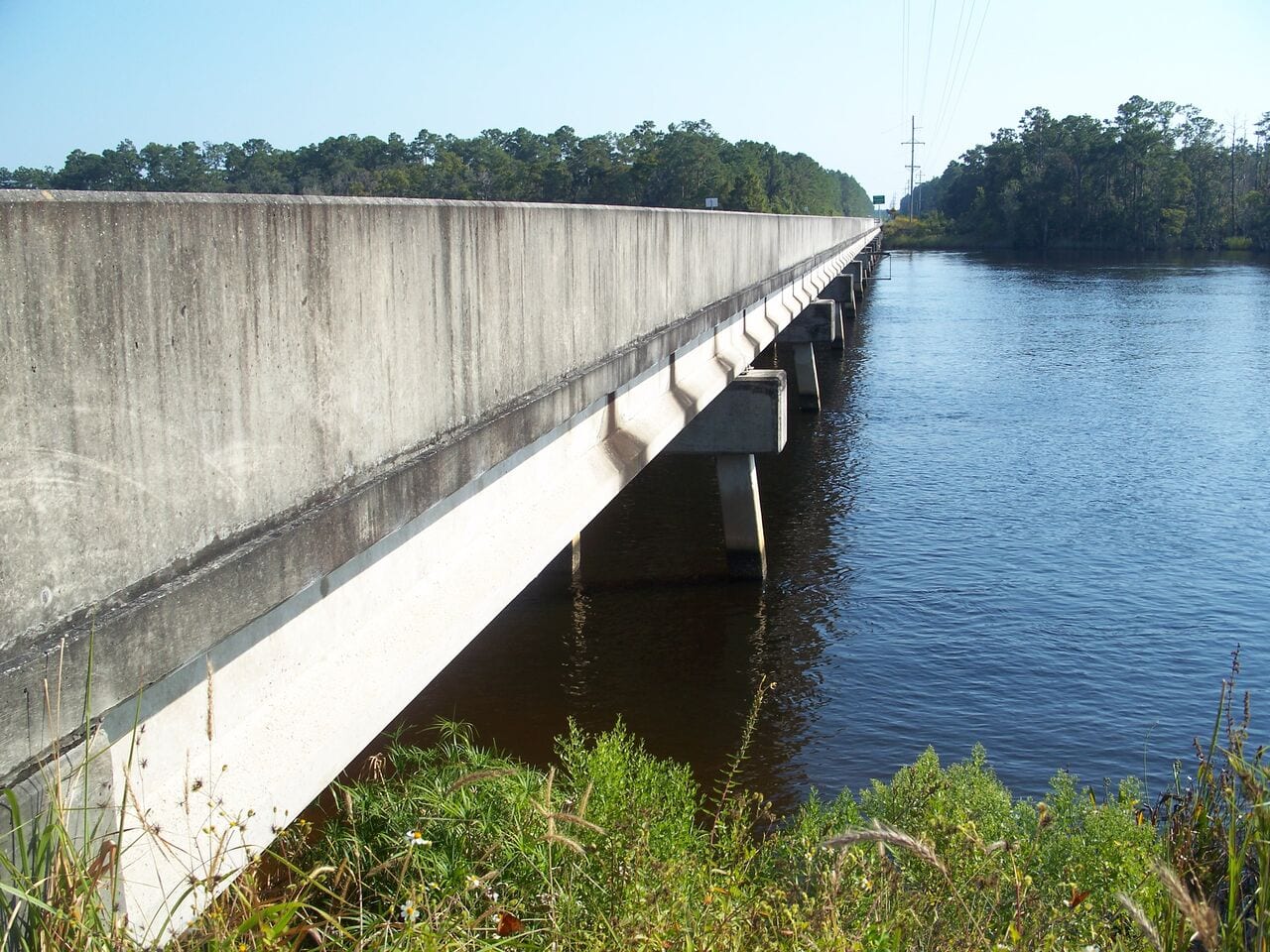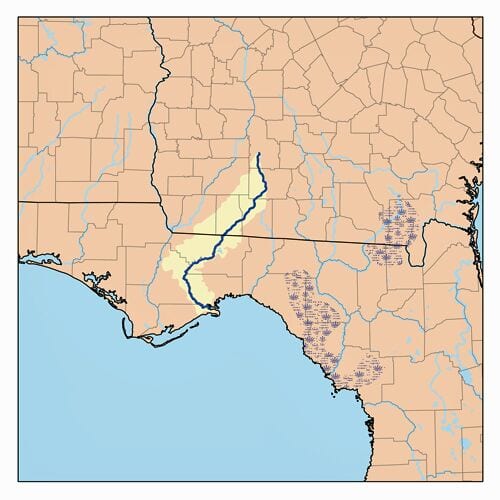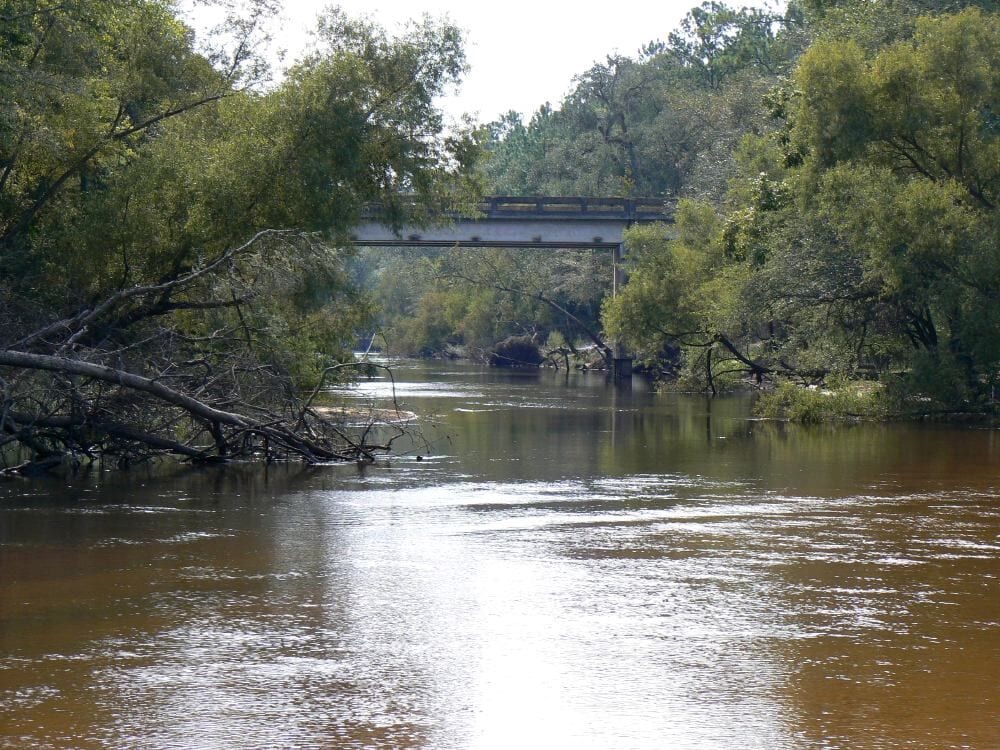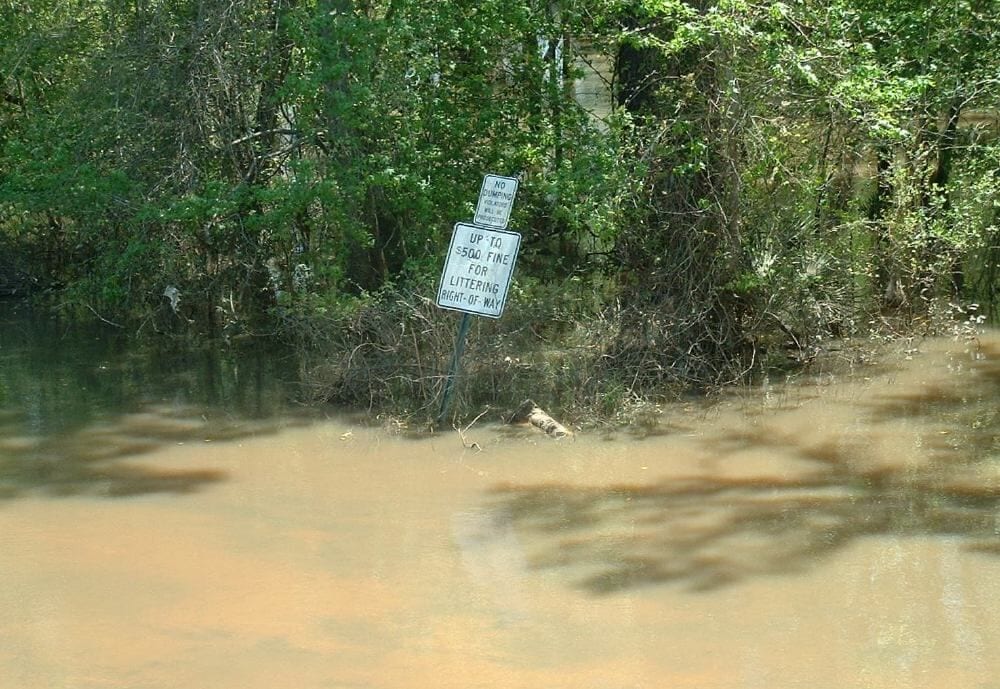Florida Waterways
“The Ochlockonee River”
By Kevin McCarthy
CAPTONS:
1 One of the bridges that crosses the river
2 The Ochlocknee is located in the Panhandle.
3 The river has several different colors.
4 The river in Gadsden County will sometimes flood.
5 The Ochlockonee Bay Bridge is south of Panacea.
6 Aerial view of the flooded river
The Ochlockonee River, pronounced “oak-LOCK-knee,” is a river in North Florida that’s great for fishing and boating. Beginning in Georgia and running south for 206 miles, it passes through very scenic parts of the Panhandle and has earned the title of “Outstanding Florida Water.” Before entering Apalachee Bay in the northeastern Gulf of Mexico in the St. Marks National Wildlife Refuge, the river forms the eastern boundary of three Florida counties (Gadsden, Liberty, and Franklin) and the western boundary of two others (Leon and Wakulla).
Because the river passes through a state forest (Talquin), a state park (Lake Talquin), and a national forest (Apalachicola), many miles of undeveloped banks have allowed a wide variety of fish to flourish. The variety of fish is due to a mixture of fresh, brackish, and salt water near its mouth, an area whose tidal effects bring saltwater fish up its course. The river flows first into Ochlockonee Bay and then into Apalachee Bay and eventually the Gulf of Mexico.
The river has seen a variety of historic events. Native-Americans attacked a family there in the Second Seminole War. Federal troops built several forts (Stansbury and Virginia Braden – named after an officer’s wife who died of yellow fever). Union gunboats in the Civil War used the river to destroy salt works. Blockade runners brought in supplies to the Confederates. Union troops attacked a Confederate fishery at Mashes Island. Federal forces also used the river to move Native Americans to the Gulf of Mexico for shipment to the so-called Indian Territory out west.
Today, while canoers can tool along a canoe trail in various parts of the river, fishermen can catch bass, bream, catfish, and perch along the river. Scientists have counted over seventy species of native freshwater fish. When the river flows into Lake Talquin, fishermen have had much success in catching record-size pickerel and black crappie. The richness of the estuary near the river’s mouth provides a breeding ground for many species of fish and shellfish. The squeamish also need to be alert for the eastern common kingsnake, the water moccasin, and the banded watersnake.
Because of occasional flooding, much organic material flows south to the estuary near its mouth. And the river does carry much sand and clay to Ochlocknee Bay. The drainage from dairy and swine farms into the river in Georgia has led to some deterioration of the water quality in the northern part of the river, but the parks and forests toward the south have helped better the quality.
Unlike the Apalachicola River, which has really serious pollution problems, the Ochlocknee is a gem of a river in North Florida.
Kevin McCarthy, the author of The Gainesville, Florida Police Department: An Illustrated History 2017 – (available at amazon.com), can be reached at ceyhankevin@gmail.com.






